The challenge: the poverty trap
Worldwide, over 800 million people live in extreme poverty. In Bangladesh, every one in 20 people survive on less than USD $3 per day. Women in rural and climate-vulnerable areas are often the most affected. Without access to capital, skills training, or social support, many women are trapped in the cycle of poverty. They have no safety net to help them recover from crises like floods, displacement, or a family member’s illness.
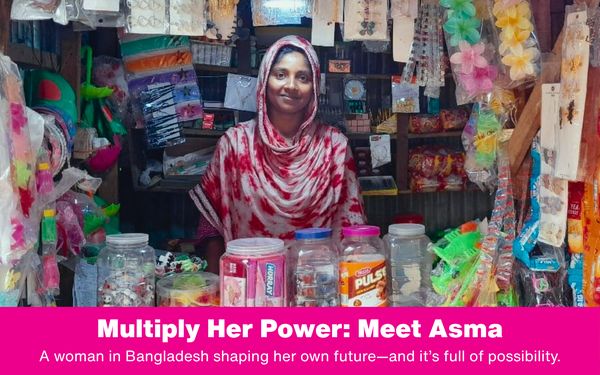
Asma knows this struggle firsthand.
A 27-year-old woman from Choto Baghai, a small village in southern Bangladesh, Asma grew up watching her father work long hours as a day laborer. Despite his efforts, their family often did not have enough to eat.
Education was considered a luxury. By fifth grade, Asma had to drop out of school because her family couldn’t afford the school fees.
By age 15, Asma was married in her parents’ attempt to ease their family’s financial burden. Her husband, Al-Amin, was also a day laborer. But his income was irregular and not enough to support them both.
In 2017, disaster struck. Riverbank erosion destroyed Asma and Al-Amin’s land. With no way to grow crops to supplement their income and their own nutrition, they spiraled into deeper hardship.
A few years later, Asma and Al-Amin moved to Bangladesh’s capital city, Dhaka, home to more than 24 million people. They settled in a slum in the Gulshan area. At first, life in the city was even more difficult. Without any local contacts or references, finding a job felt impossible.
Eventually, Asma secured work as a housemaid. With some of her earnings, she encouraged Al-Amin to start a small roadside vegetable stall. Soon after, Asma became pregnant. The couple welcomed their first child, a baby girl.
Motherhood brought new challenges. Unable to continue working as a housemaid while caring for her newborn, Asma had to quit her job. Once again, her family’s future felt uncertain.
But that’s when everything began to change.
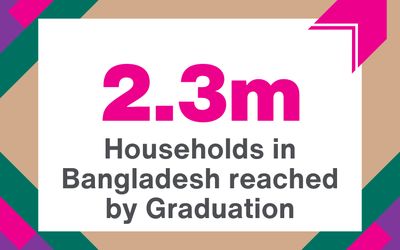

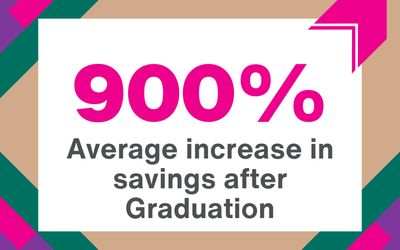
The solution: BRAC’s Ultra-Poor Graduation approach
BRAC pioneered the Ultra-Poor Graduation program in 2002, after recognizing that some people live in situations of poverty so entrenched that they cannot benefit from microfinance alone. Graduation is a holistic approach that strengthens agency, restores dignity, and puts people on a pathway to self-reliance over the course of 12 months.
It has been adapted through partnerships with over 100 organizations across more than 50 countries, and 100% of participants are women.
The model includes three must-have elements, which we call the Graduation ABCs:
- A productive asset or lump sum cash to support income-generating activities.
- Support for basic needs to ensure families can make ends meet until their new livelihood generates sufficient income.
- Coaching that unlocks agency, know–how, and hope
Since the program’s launch more than two decades ago, Graduation has reached more than 2.3 million households in Bangladesh. After the program ends, participants report an average ninefold increase in savings and 37% boost in earnings.
Asma became one of them.
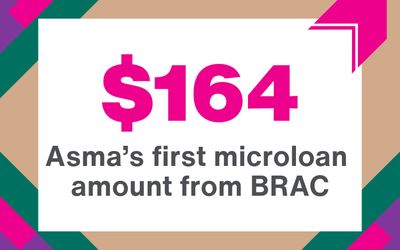
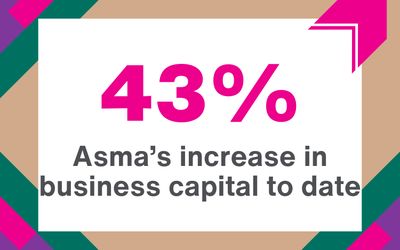
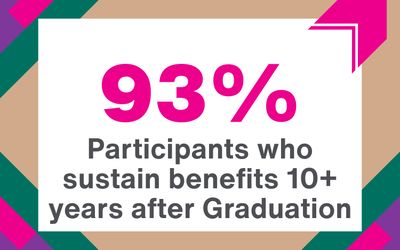
The impact: empowering families to rise above poverty
BRAC identified Asma and her family through a community survey. She was selected to participate in Graduation. Asma received her first interest-free loan of BDT 20,000 (USD $164), as well as training and mentoring.
She decided to team up with her husband and grow their small vegetable-selling business. They used the loan to purchase a manually pedaled rickshaw to sell vegetables. By working together, they were able to both cover their daughter’s childcare and expand their business.
After repaying that loan, Asma and Al-Amin took out another BRAC loan of BDT 10,000 (USD $82). They decided to diversify their income by starting a small cosmetics shop. Today, both businesses are thriving.
The couple now earns about BDT 1,000 (USD $8) per day—well above the extreme poverty line. No longer do they struggle to put food on their table. Not only are they now meeting their daily expenses, but they have also grown their business capital to over BDT 43,000 (USD $354), a 43% increase over their initial investment. They are also saving for the future.
Through the Graduation program, Asma learned financial planning, record-keeping, and how to adapt to climate risks—skills that help her safeguard her family’s progress. She dreams of returning to her village and purchasing a small piece of land where she can build a modest home. Most of all, Asma and her husband hope for a secure future for their daughter.
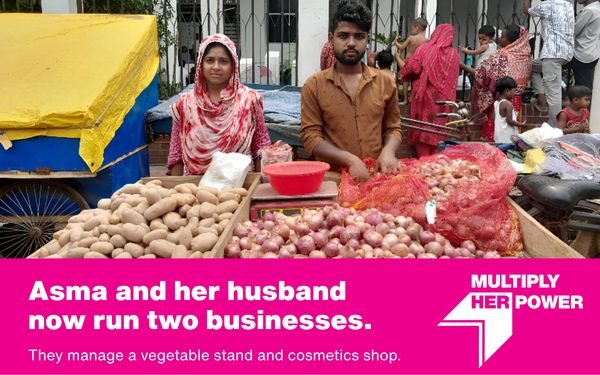
The big picture: from one woman to community impact
Asma’s story reflects the heart of the Graduation approach: when women have the right tools, they can multiply their power—and lift entire families and communities alongside them. Across Bangladesh and the Global South, BRAC’s proven model is helping women build sustainable businesses and transform their own lives.
But this kind of progress doesn’t happen alone. It happens because of people like you. Will you invest in women like Asma? They will multiply the power of every dollar you give today. With your partnership, they will break barriers and end extreme poverty for generations to come.
